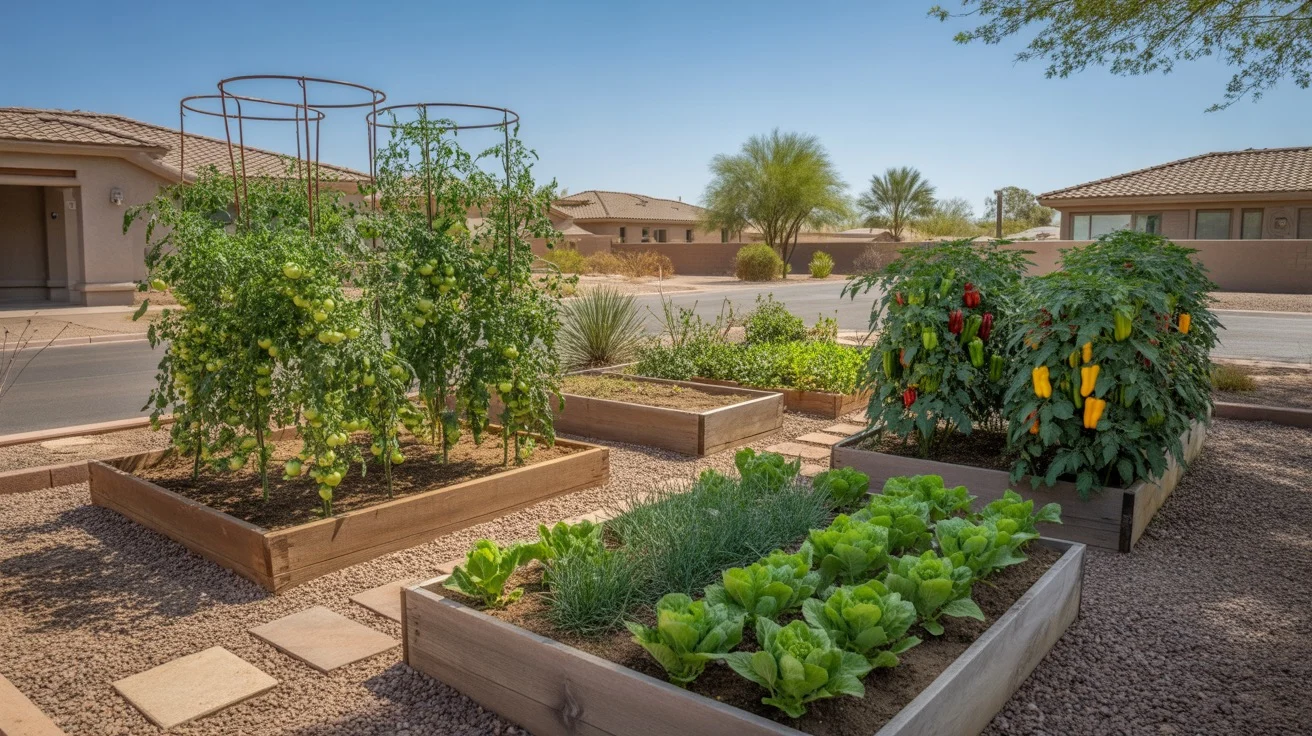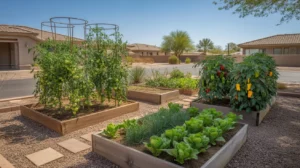As the weather warms and the days grow longer, spring is the perfect time to revitalize your Queen Creek garden. With some thoughtful preparation and care, you can transform your outdoor space into a lush oasis brimming with vibrant blooms, hearty vegetables, and fragrant herbs. Whether you’re a seasoned green thumb or a budding beginner, these spring gardening tips will help your Queen Creek garden thrive all season long.

Preparing Your Garden Beds
Before you start planting, it’s crucial to get your garden beds in top shape. Begin by clearing away any leftover debris from winter, such as fallen leaves, dead foliage, or broken branches. This not only tidies up your space but also helps prevent pests and diseases from taking hold.
Next, loosen the soil with a garden fork or tiller to a depth of about 12 inches. This allows roots to grow deeply and easily access nutrients. Mix in a generous layer of compost or well-rotted manure to enrich the soil with essential nutrients. If you’re unsure about your soil’s health, consider getting a soil test to identify any deficiencies or imbalances that need addressing.
Once your soil is prepped, smooth the surface with a rake and create neat rows or mounds for planting. Be sure to leave enough space between rows for plants to spread out as they mature. A local Queen Creek gardening expert recommends spacing rows about 18-24 inches apart for most crops.
Choosing the Right Plants for Queen Creek
With Queen Creek’s warm spring weather and abundant sunshine, a wide variety of plants thrive in the area. Some top picks for spring include:
- 🌱 Tomatoes – Choose heat-tolerant varieties like Celebrity, Solar Fire, or Phoenix
- 🥒 Cucumbers – Lemon, Straight Eight, and Armenian are well-suited for Queen Creek
- 🌶️ Peppers – Try jalapeños, poblanos, or sweet bells for a colorful harvest
- 🥬 Leafy greens – Lettuce, spinach, and Swiss chard are great spring crops
- 🌻 Flowers – Marigolds, zinnias, and cosmos add cheerful color and attract pollinators
When selecting plants, look for varieties that are well-adapted to Queen Creek’s climate. Opt for seedlings that are compact, deep green in color, and free of pests or diseases. Local nurseries and garden centers are excellent resources for regionally appropriate plants and expert advice.
As you plan your garden layout, consider companion planting to naturally deter pests and encourage healthy growth. For example, planting basil near tomatoes can improve their flavor, while marigolds help repel nematodes in the soil.
Following a Planting Calendar
Timing is everything when it comes to a successful spring garden. Plant too early and a late frost could damage tender seedlings. Wait too long and the intense summer heat may scorch young plants. Luckily, Queen Creek’s climate allows for an extended spring planting season.
Generally, cool-season crops like lettuce, peas, and radishes can be planted in late February or early March. Warm-season vegetables such as tomatoes, peppers, and squash should wait until late March or April, once the soil has warmed and the risk of frost has passed.
Keep an eye on local weather forecasts and be prepared to protect plants with row covers or cloches if an unexpected cold snap threatens. Gradually harden off seedlings by exposing them to outdoor conditions for increasing periods each day before transplanting them into the garden.
Watering Wisely
Proper watering is key to keeping your spring garden healthy and productive. Queen Creek’s low humidity and warm temperatures can quickly dry out soil, so it’s important to water deeply and consistently.
Aim to water early in the morning, giving plants time to absorb moisture before the heat of the day sets in. This also allows foliage to dry off, reducing the risk of fungal diseases. Water the base of plants rather than the leaves to minimize evaporation and prevent scorching.
Most plants need about 1-2 inches of water per week, depending on factors like soil type, weather conditions, and plant maturity. Use a rain gauge or moisture meter to track watering and adjust as needed. Applying a layer of organic mulch, such as straw or shredded leaves, can help retain soil moisture and regulate temperature.
Managing Pests and Diseases
Even with the best care, pests and diseases can sometimes strike a spring garden. Common culprits in Queen Creek include aphids, whiteflies, and powdery mildew. Regularly inspecting plants for signs of trouble can help you catch issues early and prevent them from spreading.
If you do spot pests, try removing them by hand or using a strong blast of water. For more stubborn infestations, insecticidal soaps or neem oil can be effective natural remedies. Pruning off diseased foliage and ensuring good air circulation around plants can help manage fungal issues.
Planting native flowers and herbs throughout your garden can attract beneficial insects like ladybugs and lacewings, which prey on common garden pests. Companion planting with strong-scented herbs like basil, mint, or lavender can also help deter pests naturally.
Feeding and Nurturing Your Garden
As your spring garden grows, regular feeding can help plants reach their full potential. A balanced, slow-release fertilizer applied every 4-6 weeks provides a steady supply of nutrients. Alternatively, you can top-dress beds with compost or well-rotted manure to nourish plants and improve soil health.
In addition to feeding, keep an eye out for signs that plants need additional care. Yellow leaves may indicate a nutrient deficiency, while wilting could signal over or under-watering. Pruning off dead, damaged, or diseased foliage keeps plants tidy and focused on healthy growth.
As plants mature, you may need to provide support for tall or vining crops. Tomato cages, trellises, or stakes help keep plants upright and make harvesting easier. Regularly harvesting vegetables and deadheading spent flowers encourages plants to continue producing.
Enjoying the Fruits of Your Labor
With dedication and a little know-how, your Queen Creek spring garden will soon be bursting with fresh, homegrown produce. Involve the whole family in planting, tending, and harvesting to make it a fun and rewarding experience.
As you enjoy the literal fruits of your labor, take time to appreciate the beauty and bounty of your outdoor space. Savor the flavors of sun-warmed tomatoes, crisp cucumbers, and sweet peppers, knowing that you nurtured them from tiny seeds to delicious vegetables.
Looking for more spring gardening inspiration? Check out “Blooming Into Spring: Ultimate Garden Care Guide for Beautiful Mesa Yards” for additional tips and tricks to make your garden the envy of the neighborhood. With a thriving spring garden, you’ll create a lush haven that nourishes both body and soul.











